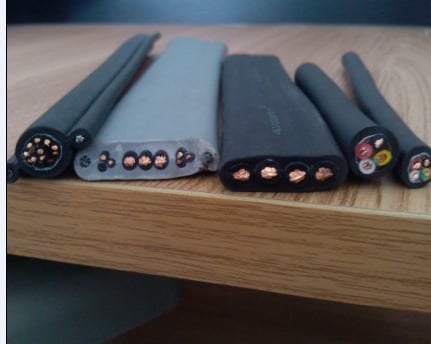How to Choose the Right Wire for Your Project
Choosing the right electrical wire for your project is crucial for safety, efficiency, and performance. With a myriad of options available, it can be daunting to determine which type suits your needs best. This guide will help you navigate the essentials of electrical wire selection, ensuring you make informed decisions.
10/16/20243 min read


1. Understanding Wire Types
Electrical wires come in various types, each designed for specific applications. The most common types include:
Copper Wire: Known for its excellent conductivity and flexibility, copper wire is often used in residential wiring and electronic applications.
Aluminum Wire: A lighter and less expensive alternative, aluminum wire is suitable for larger electrical installations but requires careful handling due to its susceptibility to oxidation.
Multi-Stranded vs. Solid Wire: Multi-stranded wire is flexible and better for applications requiring movement, while solid wire is typically used in stationary installations.
2. Wire Gauge Explained
Wire gauge refers to the thickness of the wire, which significantly impacts its electrical capacity. The American Wire Gauge (AWG) system is commonly used, with lower numbers indicating thicker wires. When choosing a wire gauge, consider the following:
Current Load: Each wire gauge has a maximum current it can safely carry. Ensure your chosen wire can handle the load of your devices.
Length of Run: Longer distances can lead to voltage drops. A thicker wire may be necessary for longer runs to maintain efficiency.
3. Safety Considerations
Safety is paramount when working with electrical wire. Here are essential safety tips:
Use the Right Insulation: Ensure that the wire insulation is rated for the environment where it will be used, whether indoors, outdoors, or in wet locations.
Check for Certifications: Look for wires that comply with safety standards, such as UL (Underwriters Laboratories) certification.
Avoid Overloading Circuits: Be mindful of the total load on a circuit to prevent overheating and potential fire hazards.
4. How to Install Wire Properly
Proper installation is critical for the performance and safety of your electrical system. Here’s a brief guide:
Plan Your Layout: Before installation, create a detailed layout of where the wires will run, taking care to avoid potential hazards.
Use Proper Tools: Utilize the right tools, such as wire strippers and crimpers, to ensure clean and secure connections.
Follow Local Codes: Adhere to local electrical codes and regulations to ensure compliance and safety.
5. Environmental Impact of Wire Manufacturing
The manufacturing of electrical wire has environmental implications. Factors to consider include:
Material Sourcing: The extraction of copper and aluminum can have significant ecological impacts. Opt for manufacturers that prioritize sustainable practices.
Recycling Options: Look for wires that are recyclable or made from recycled materials to minimize waste and resource depletion.
6. Innovations in Wire Technology
Advancements in wire technology are transforming the industry. Notable innovations include:
Smart Wires: These wires are equipped with sensors that monitor energy consumption and detect faults, enhancing safety and efficiency.
Eco-friendly Materials: New materials are being developed that reduce environmental impact while maintaining performance standards.
7. Maintenance Tips for Extending Wire Life
To ensure the longevity of your electrical wire, consider these maintenance tips:
Regular Inspections: Periodically check for signs of wear, damage, or corrosion.
Proper Storage: Store excess wire in a dry, cool place to prevent degradation from moisture or heat.
Avoid Excessive Bending: Minimize sharp bends or twists in wires during installation to prevent stress and potential failure.
8. Common Misconceptions About Electrical Wiring
There are several misconceptions about electrical wiring that can lead to unsafe practices:
Thicker is Always Better: While thicker wire can handle more current, using unnecessarily thick wire can be impractical and costly.
All Wires Are the Same: Different applications require specific wire types and ratings; using the wrong wire can lead to hazards.
9. When to Upgrade Electrical Wiring
Recognizing when to upgrade your wiring is essential for safety and efficiency. Signs to watch for include:
Frequent Circuit Breaker Trips: This may indicate that your wiring cannot handle the current load.
Dimming Lights: If your lights dim or flicker when appliances are in use, it might signal inadequate wiring.
Old Wiring Systems: Homes built several decades ago may still have outdated wiring that does not meet current safety standards.
Conclusion
Choosing the right electrical wire for your project involves understanding wire types, gauging safety, and adhering to installation standards. By following this guide, you can ensure that your electrical systems are safe, efficient, and durable. For more information on quality electrical wire, visit our website and explore our extensive range of products tailored to meet your specific needs.
